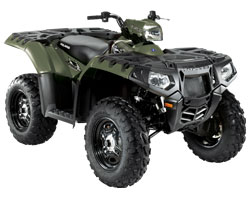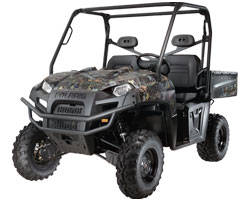Maintenance and Anticipation
You've made the commitment: You're no longer just a deer hunter, you're a manager. And with that role change comes a realization that you're not only part of something larger than yourself, but you're in it for the long haul. The land you manage has become a place where you take deer, but also where you give back. Part of that giving involves making sure your deer—indeed, all wildlife—get the proper nutrition that they need, and that means planting food plots.

Fortunately, there are several viable solutions. If you’ve planted a perennial plot like clover, mowing is perhaps the best method for controlling weeds. While mowing doesn’t kill weeds completely, it can inhibit their growth enough so desirable species can flourish. However, mowing is easy, relatively inexpensive, and inhibits weed growth enough to let clover, which grows fairly aggressively, to establish itself and out-compete the weeds. Even better, there are some excellent mowers developed specifically for ATV-use these days.
Of course in some food plots—annuals especially—mowing isn’t an option. In such cases applying herbicide with a sprayer is an excellent idea. While it’s natural to have some fear while working with chemicals, common sense, reading/following directions, and good equipment/gear can make all the difference. There are many outstanding herbicides (some developed specifically for the food plot market) available today and—used properly—they can provide dramatic and long-term weed control for the serious food plotter. Once again, Polaris has the food plotting accessories you need, this time our Lock & Ride 14-gallon sprayer. Don’t forget to tote in extra tools on your Lock & Ride Ranger Vertical Tool Holder.
As you inspect and maintain your food plots, consider starting a mineral lick at or near several of them. Licks are highly attractive to deer, especially in the summer months. Now is when lactating does, nursing fawns and antler-growing bucks are all in need of supplementation to help them achieve their potential. And since their diet is flush with water but low in salt, whitetails are operating on a sodium deficiency now, which makes them crave the salt found in most lick mixes. To start a lick, simply pour half a bag of commercially-available mix onto the dirt near the corner of a field or food plot edge. Use a shovel to spade the mineral into the dirt, and then pour the remaining contents of the bag onto the ground. After the deer have consumed the free mineral, they’ll begin pawing and nibbling at the dirt and—presto—you’ve created a lick!
Your lick site can do double-duty; serving as the perfect spot to hang a trail camera and shoot some photos of your resident deer. Hang your camera 10-25 feet from your lick, and 4-5 feet off the ground. Come back once a week or so and check for new photos. You’ll soon find that checking your scouting camera is an enjoyable hobby, but also an excellent method of learning about your deer herd; the buck/doe ratio, fawn recruitment and perhaps a glimpse at that trophy you’re dreaming about. Your camera is not only fun and exciting, it’s an outstanding learning tool!
ADVERTISEMENT
Related Vehicles
The Polaris Sportsman® 850 XP
Sportsman XP Facts:
- 850 SOHC Twin EFI Engine
- Available Electronic Power Steering
- Legendary Smooth Rolled Independent Rear Suspension (IRS)
- Superior Ergonomics
Learn More about the Sportsman XP >>
The Polaris RANGER 800 XP®
Ranger 800 XP Facts:
- New! 800 Twin EFI Engine
- Available Electric Power Steering
- Dual A-Arm Front Suspension
- Legendary Smooth Independent Rear Suspension (IRS)
Deer Management Archive
2009 Archive
- How to Judge a Trophy Buck's Potential
- Kick-Starting Your Management Plan
- Mapping Your Whitetail Hunting Paradise
- Conduct a Herd Monitoring Profile
2008 Archive
- Way to Grow
- The Big Step
- Maintenance and Anticipation
- Reaping the Rewards
- Making Things Grow
Deer Population by State
Weekly QDM Tips
Take a camera survey of your herd in the pre-season. Mount trail cameras near high-traffic deer areas such as mineral licks, food plots, or fence crossings. Record the number, sex and approximate age of every deer you “shoot”, then compare that data with your field observations come hunting season.







